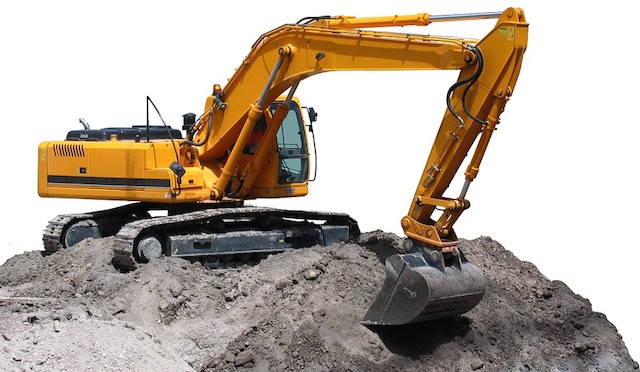When it comes to getting the right equipment for your job, or for your business, here’s a quick and dirty (pardon the pun) look at diggers and excavators, and which types are suited for various types of jobs.
From small to large…
Skidsteers
The main manufacturer of these is Bobcat and in fact their name has become synonymous with this piece of kit. A skidsteer is essentially a small, highly manoeuvrable digger that is good to have when you’re working in a confined space or when getting to where you need to do the work involves narrow access, for example if you need to go round the side of a house to get to the backyard.
Skidsteers are able to literally ‘turn on a dime’ as their steering is independent on each side, so while the wheels (or tracks) are going forward on one side, they are going backwards on the other, enabling so-called ‘zero radius’ turning. Skidsteers like the Bobcat also come with a huge range of different attachments for different types of jobs – from stump grinders, to mowers and blowers for landscaping type projects, to more conventional buckets and even forklift type pallet forks.
The only downside of skidsteers is their limited size and power, which makes bigger jobs, like digging huge holes in the ground, not the ideal use for them.
Skidsteers are a great choice for work involving for example…
- Excavating a hole for an in-ground swimming pool
- Rubbish removal on a building site
- Landscaping work in backyards with narrow entry/exit points (as above)
- Backfilling
Excavators
If you’re looking to make light work of a bigger project and can get wide access to the site, a conventional excavator will be the right choice. Major projects like large scale construction, building demolition and major landscaping projects will get done more quickly and easily with an excavator. Excavators can be anything from 1.5 tonnes to 13 tonne behemoths.
Loaders & Backhoes Loaders
Other types of equipment that perform similar, but slightly different roles are the loader, predominantly used for scooping up and transporting larger amounts of material (eg earth, sand, rubbish) from one spot to another, and the hybrid backhoe loader.
They are not really designed to do any digging, however (confusingly) the iconic JC Bamford (better known as JCB) digger seen on building sites around the world is technically a ‘backhoe loader’ and designed to do the digging and the transporting. Developed by JCB in the UK in 1953, the machine rapidly became a fixture on smaller building sites, for its relatively small size and flexibility. Much like the Bobcat, backhoe loaders can be fitted with a wide variety of accessories to allow all sorts of jobs to be performed, from digging holes to trenches, to moving material around.
There are plenty of resources on the internet to help you decide which piece – or pieces – of equipment you will need for your project or business. Just like cars have people like Jeremy Clarkson to tell us which car to buy, there are also a few people out there who review building, landscaping and construction equipment! Here’s a site that has reviewed a range of mini excavators for example – ‘6 awesome mini excavators’ and there are also reviews of individual models such as these…
McLoughlin J1T Mini Excavator
CAT 308E2 Mini Excavator
As well as speaking to the manufacturers and dealers, it’s also worth hiring out different types of equipment first to get an idea of how they work and how suitable they would be. Once you’re ready to get your own, call us at Ezilend and we’ll help you with the equipment loan!





